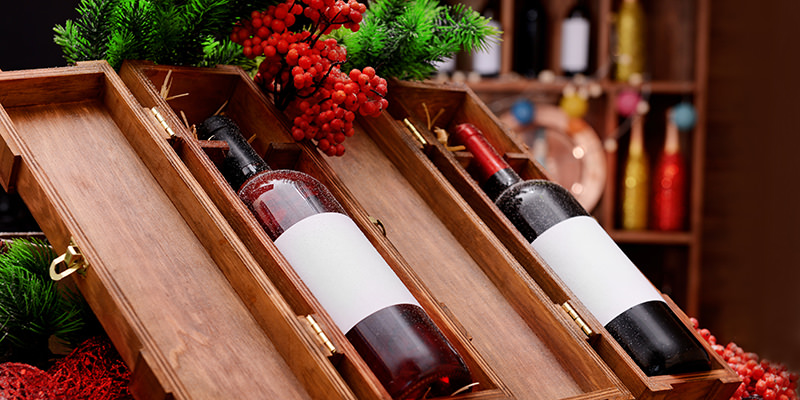Is it just me, or has it been a looooooooooong year? Fortunately, in just a few days, there will be respite: work is going to slow down, the onslaught of e-mails will cease, and we’ll all get out our ugly holiday sweaters, roast something in the oven, and raise our glasses to friendship and family.
We all deserve good wine on our holiday meal table. This Christmas or New Year’s, celebrate another year’s passing with a special bottle that you wouldn’t drink on just any regular night. A beautiful, complex, unique wine not only enhances all the delicious holiday dishes – it can help us to pause and reflect on life. So, treat yourself to a truly great wine, something to linger over as you close out the year and move into the next. Here are a few ideas.
Champagne
There’s a lot of good sparkling wine out there that isn’t from the actual region of Champagne – like Crémant, or Prosecco. But for special occasions, it’s worth it to get a really great bottle of Champagne.
For between $45-60, you can score a fantastic bottle of “Grower Champagne,” a designation meaning that the winemaker also farmed the grapes (this is actually the minority of producers in Champagne). It’s the same as saying that the wine is made from “estate-grown” grapes. Compared to large, heavily branded Champagne “houses,” a Grower Champagne can not only be more affordable, but it’s more likely to be made from organic grapes, and will also be a more terroir-expressive, nuanced wine (in other words, tastier).
To figure out whether a wine is Grower Champagne, look for the letters “RM” (Récoltant-Manipulant) on the label, or just ask your local retailer.
Here are a few of my favorite Grower Champagnes that are totally worth the price. Pair one of these bottles with appetizers–anything rich or fried–or even with dessert. Or, if you’re being really luxe, foie gras.
- Jacques Lassaigne blanc de blancs $46
- Savart Premier Cru “L’Ouverture” blanc de noirs $51
- Pierre Moncuit brut rosé $45
Friulian-Style Orange Wine
Increasingly, so-called “orange” wines, which are made by allowing the juice from white grapes to stay in contact with the darker skins for a few days or weeks, are appearing on wine lists at trendy spots. Many of these orange wines are very affordable, but there’s also a whole class of incredibly good, high-end orange wines that are very food-friendly. The tannins in orange wine (from the skins), along with the acidity from the white grapes, make it fantastic for pairing with poultry or even red meats.
Friuli, a region in northeastern Italy that shares a border with Slovenia, is at the center of the orange wine revival. In the centuries before winemaking became modernized, and particularly in the country of Georgia, white wine was commonly made in clay amphora vessels, which produces a more powerful wine, and right now this method is enjoying something of a renaissance. One winemaker who spearheaded this amphora revival is Josko Gravner, whose limited-production orange wines see as much as seven months of skin contact while resting in amphora, and then seven years of aging in oak barrels. The Gravner wines are very rare, and can be found at specialty retailers.
This approach to making high-end orange wine is echoed in various forms around the world, from other parts of Italy all the way to California. Here are a few other stunning examples to seek out:
- Radikon “Oslavje,” 2006 $35 (500 mL bottle)
- Scholium Project “The Prince In His Caves,” 2012 $40
- COS “Pithos” Bianco, 2012 $36
Aged Barolo
Barolo is 100 percent Nebbiolo from the northern Italian wine region of Piedmont, and it is magical when aged. In fact, it really should not be drunk young; the ideal window for most Barolo wines is between 10-15 years, or sometimes more.
Nebbiolo is beloved for its lithe acidity, which makes it ideal for pairing with pork or red meat. In Barolo, oak aging is used to develop a more concentrated wine from the grape, with enhanced tannic structure. A wonderful Barolo that’s in the correct drinking window will be powerful yet elegant, with rich notes of leather, tar, and roses, and well-integrated tannins that linger on the finish.
If you’re going to enjoy an aged Barolo, make sure to open the bottle at least 45 minutes before you plan to drink it, or even as much as several hours. It really needs time to open up. Decanting the wine is a good move.
Here are a few Barolo wines that will make you say, “Mamma mia!”

